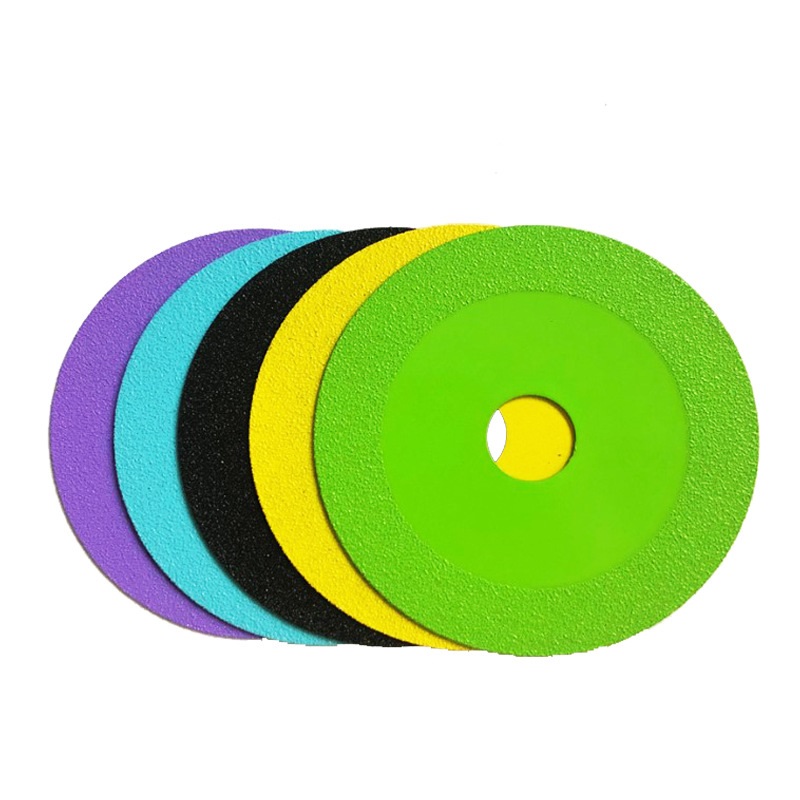The Ultimate Guide to Glass Cutting Blades: Features, Technology, and Advantages
Types of Glass Cutting Blades and Their Applications
The choice of blade is primarily determined by the specific application, the type of glass, and the required precision. The main categories include:
- Diamond Blades: These are the pinnacle of cutting technology for glass. Electroplated diamond blades feature a single layer of diamond particles bonded to the edge, providing an extremely sharp and fast-cutting action ideal for many glass types. For the most demanding applications, such as in high-volume electronic display manufacturing, diamond刀轮 (diamond knife wheels) are used. These can be engineered with micro-teeth on a microscopic scale—some as small as 1 micron with a precision of ±100 nanometers—ensuring a clean, controlled cut with minimal damage to the glass surface.
- Hard Metal/Alloy Blades: Often made from tungsten-cobalt-titanium hard alloys, these blades are a cost-effective and highly reliable solution for general and industrial glass cutting. They are commonly found in manual T-type cutters and automated machines for cutting float glass, patterned glass, and tiles. Brands often source premium materials from countries like Japan and South Korea to ensure extended service life.
- Ultrasonic Diamond Composite Blades: Representing a significant technological leap, these blades combine ultrasonic vibration with a diamond edge. The system includes an ultrasonic generator, a transducer, and an amplitude-modifying rod that amplifies the vibration. The blade scores the glass, and the ultrasonic vibrations then propagate through the score line, causing the glass to snap apart. This results in a smoother edge and significantly reduces the rate of defective products.
Key Technological Features
Modern glass cutting blades incorporate sophisticated engineering to achieve unparalleled performance.
- Micro-Nano Laser Processing: Advanced manufacturers use laser technology to create incredibly consistent and uniformly distributed micro-teeth on diamond刀轮. This level of precision allows for superior control over the (lateral breakage area) and (longitudinal crack depth), which is crucial for cleaving glass cleanly without surface damage.
- Specialized Edge Geometry: The design of the blade’s edge is critical. Some blades for tougher materials feature a compound edge with a main (main cleavage angle) of 20-40° for strength and a secondaryof 5-18° for finer cutting, greatly enhancing durability and cut quality compared to single-angle designs.
- Precision Engineering for Automation: In automated cutting machines for displays like TFT and OLED, blades are part of a high-precision system. These systems feature digital control of cutting depth and pressure (as precise as 0.001MPa), automatic tool positioning, and the ability to use different blade materials—alloy, composite, or diamond—for specific tasks.
Advantages of Using the Right Blade
Selecting the appropriate blade delivers tangible benefits across the entire production process.
- Exceptional Cut Quality: The primary advantage is a flawless finish. High-quality blades minimize chipping, create smaller lateral damage, and allow for precise control of the fracture line, leading to a perfect break and a smooth edge that requires minimal post-processing.
- Dramatically Extended Service Life: Premium blades last significantly longer. A high-grade hard alloy blade can outlast standard blades by 3 to 6 times, cutting 30,000 to 60,000 linear meters. Ceramic blades can last over 11 times longer than standard steel blades, reducing changeover frequency and waste.
- Increased Production Efficiency: Durability and performance directly translate to higher productivity. Advanced blades can boost cutting efficiency by 5 to 10 times compared to ordinary tools. In automated settings, they enable cutting speeds of up to 15,000 pieces per hour for displays.
- Reduced Operational Costs: While the initial investment might be higher, the long-term savings are substantial. Longer lifespan means lower blade consumption, while higher precision and fewer breakages reduce material waste and downtime.
Choosing the Right Blade: A Quick Guide
- For Manual and General Glasswork: T-type push cutters or roller cutters with hard alloy blades are ideal. They offer versatility for thicknesses from 1mm to 25mm and are perfect for glass sheets, tubes, and tiles.
- For High-Volume Industrial Cutting: Electroplated diamond saw blades are the go-to for their durability and fast cutting speed on production lines.
- For Ultra-Thin and Electronic Glass (TFT, LCD): Precision diamond or ultrasonic diamond composite blades are essential. They provide the nanometer-level precision and clean, controlled fracture needed for fragile and high-value materials.
Post time: Oct-13-2025
